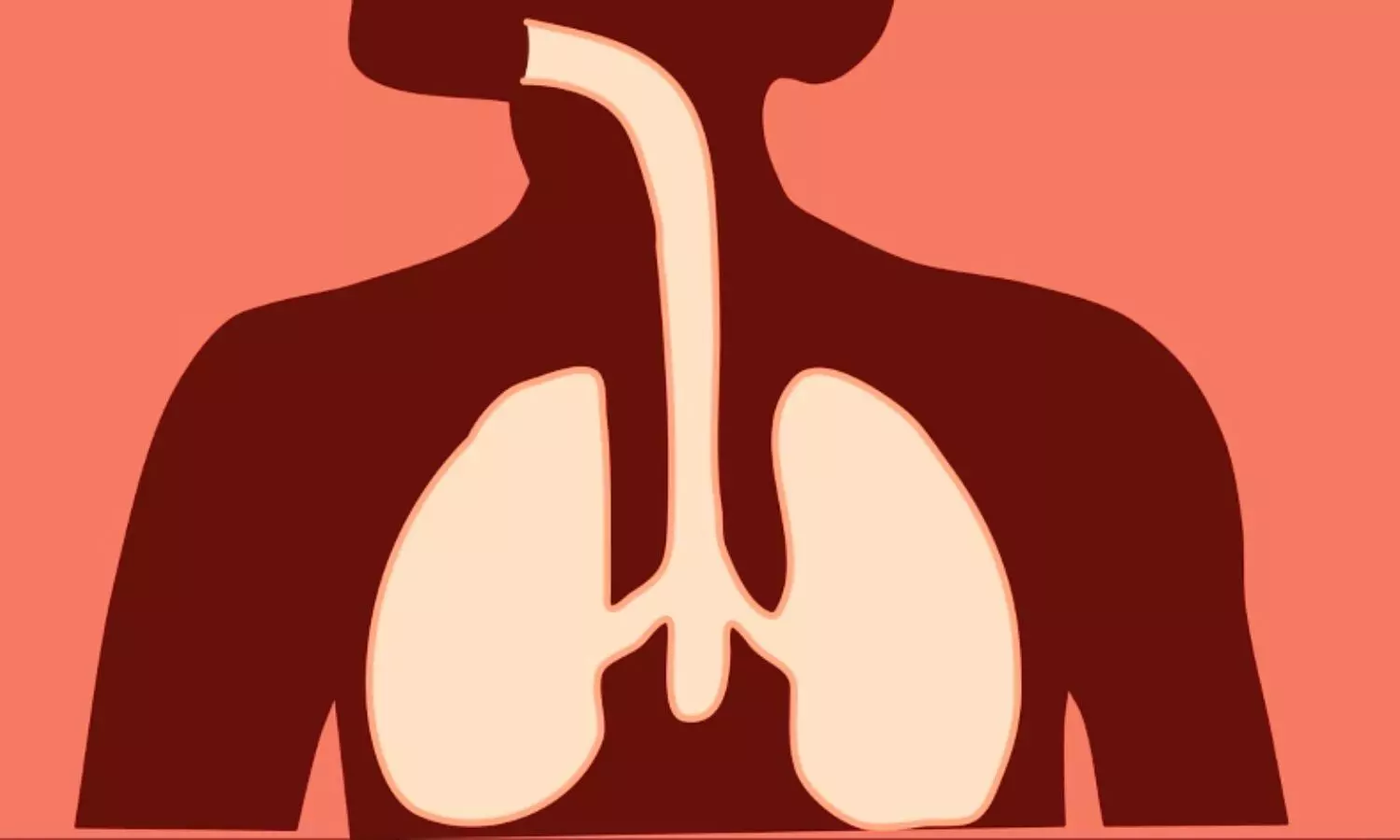Zone zero: The rise of effortless exercise
Powered by WPeMatico
Powered by WPeMatico
Powered by WPeMatico
Powered by WPeMatico
Powered by WPeMatico

A groundbreaking cancer drug could enhance how patients respond to chemotherapy even in treatment-resistant tumours.
The drug works by disarming a key defence mechanism that tumours use to protect themselves from treatment. In preclinical models, it has already shown promise in making chemotherapy-resistant cancers more responsive to therapy.
Chemotherapy is one of the most widely used cancer treatments, but it doesn’t always work as effectively as hoped. One major reason is that a specific group of the body’s own immune cells act as a barrier around tumours. These white blood cells known as macrophages surround the blood vessels inside tumours and act like gatekeepers, blocking helpful immune cells from entering and doing their job in supporting the responses to chemotherapy.
The King’s College London scientists, who have launched a spinout company Aethox Therapeutics, found that these macrophages make a protein called heme oxygenase-1 (HO-1), which helps shield the tumour from the immune system and block the effects of chemotherapy. The new drug, KCL-HO-1i, targets this protein.
Professor James Arnold, Head of Tumour Immunology Group, King’s College London, said: “We discovered that these macrophages in cancer play a key role in blocking chemotherapy. By targeting the enzyme they produce using KCL-HO-1i, we were able to help beneficial immune cells and chemotherapy drugs become significantly more effective. In laboratory models, even chemotherapy-resistant tumours became responsive to treatment, which is a really exciting step forward.”
Unlike many cancer treatments that require hospital visits, KCL-HO1i is designed to be taken at home as a tablet between chemotherapy sessions. This makes it easier for patients to incorporate into their treatment plans without adding extra hospital burdens.
In early tests using mouse models of breast cancer, supported by funding by Cancer Research UK and Medical Research Council (MRC), the drug made tumours more responsive to a range of commonly used chemotherapies. These promising results suggest it could be used across a wide variety of cancer types and chemotherapy treatments.
The researchers hope that with funding, clinical trials on breast and other cancers could begin within two years.
Professor James Spicer, Professor of Experimental Cancer Medicine, King’s College London, said: “Chemotherapy remains a key part of treatment for many patients with cancer, but too often it is not as effective or long-lasting as we might like. This research has identified a key reason for these limitations, and discovered a drug that we are keen to test in the clinic alongside established chemotherapy drugs”.
This breakthrough is the result of a multidisciplinary collaboration between researchers including Professors James Arnold, James Spicer, and Miraz Rahman and their research teams at King’s College London.
Professor Miraz Rahman, Professor of Medicinal Chemistry, King’s College London, said: “If human trials are successful, KCL-HO-1i could become a valuable companion drug to existing cancer therapies – helping more patients to benefit from the treatments that are already available and reduce the need for more aggressive cancer therapies in the future.”
Tanya Hollands, Research Information Manager at Cancer Research UK, added: “Researchers are increasingly learning how to make better use of existing cancer treatments, whether it’s using them differently or in combination with new medicines, like this work suggests. Using combination therapies can help bring improved treatment options to patients more quickly, safely and affordably, because some components of the treatment have already been tested and used in the clinic.
While early stage, it’s exciting to see this potential new way to disarm cancer’s ability to avoid detection by the immune system with a new drug, while also boosting the effectiveness of chemotherapy, and we look forward to seeing how this work progresses.”
Reference:
Meriem Bahri et al, An oral heme oxygenase inhibitor targets immunosuppressive perivascular macrophages in preclinical models of cancer, Science Translational Medicine (2025). DOI: 10.1126/scitranslmed.ads3085
Powered by WPeMatico

Upright positions and mobility during labor are pivotal for improved maternal and fetal outcomes; however, such practices remain underutilized, particularly in low-income settings like Uganda. Despite recommendations from the World Health Organization for varied upright positions such as sitting, squatting, and walking during labor, cultural inertia often results in women being confined to supine positions. Midwives serve as key facilitators in labor, and their practices heavily influence women’s choices and experiences during childbirth. Recent study sought to explore midwives’ viewpoints and the rationale behind their selection of birthing positions during labor.
Historical Context of Labor Positions
Historically, numerous labor positions existed that allowed women to customize their birthing experience, emphasizing comfort and empowerment. However, the shift to institutionalized births introduced norms that often prioritize supine deliveries, reflecting a biomedically-centric approach. Research evidences the benefits of active and upright positions, including increased control for the birthing woman, decreased cesarean rates, and improved fetal conditions, yet limiting beliefs and institutional practices present substantial barriers to their adoption.
Challenges in Uganda’s Birthing Practices
In Uganda, the ongoing reinforcement of traditional practices—often led by midwives—while acknowledging women’s preferences for alternative birthing positions is crucial for enhancing maternal care. As cited, a high percentage of women prefer positions other than lying on their backs, indicating a disconnect between practice and preference. Yet, midwives often feel bound by institutional norms, fearing complications or a lack of resources to effectively support non-supine positions.
Midwives’ Perspectives and Institutional Barriers
A model employing qualitative thematic analysis of midwives’ perspectives reveals a complex interplay of professional responsibility, established norms, and individual agency. Midwives exhibit varying degrees of comfort with upright positions, often defaulting to supine due to fears regarding safety and efficacy, particularly during the second stage of labor. Their clinical practices reflect a risk-averse mentality shaped by institutional protocols that prioritize standardized procedures. Importantly, while midwives expressed a desire to respect women’s birthing choices, they frequently hesitated to advocate for these due to uncertainties around potential complications.
Recommendations for Enhancing Midwifery Education
The discussion underscores the need for enhanced midwifery education focused on various birthing positions and addressing common misconceptions about risks associated with upright labor. By fostering a systemic approach to overcome resource limitations and facilitating continued professional development, stakeholders can empower midwives to promote a more woman-centered care paradigm reflective of women’s preferences. The historical context of colonialism and its lasting impacts on birthing practices also highlight the importance of integrating traditional knowledge and practices into modern clinical care. Establishing a supportive environment, where midwives can empower women’s choices while ensuring safety, is critical to transforming labor experiences in Uganda.
Key Points
– Mobility and upright positions during labor are crucial for enhancing maternal and fetal outcomes, yet many women in low-income settings, such as Uganda, remain confined to supine positions due to cultural inertia despite WHO recommendations.
– Historically, diverse labor positions provided women opportunities for personalized and empowering birthing experiences, yet modern medical practices have largely shifted towards supine deliveries, which are often rooted in a biomedically-centric approach despite evidence supporting the benefits of active labor positions.
– In Uganda, a significant proportion of women express preference for laboring in upright positions rather than lying supine; however, midwives often reinforce traditional practices, feeling constrained by institutional norms and a lack of resources to support these preferences.
– Thematic analysis of midwives’ perspectives indicates a complex dynamic where professional responsibility, established norms, and personal agency influence their practice, resulting in a tendency towards risk-averse behavior that defaults to supine positions, primarily due to safety concerns.
– Recommendations for midwifery education highlight the urgent need to address misconceptions around upright labor, enhance knowledge of diverse birthing positions, and foster continuous professional development to empower midwives in championing women-centered practices.
– The discourse connects the historical context of colonialism with current birthing practices, emphasizing the importance of integrating traditional knowledge into modern healthcare frameworks to create supportive environments in which midwives can encourage women’s choices while maintaining safety.
Reference –
Z. H. Fatma et al. (2025). ‘This Is Like Tradition, Lie On Your Back, Hold Your Leg, And Push’: Understanding Midwives’ Perspectives On Their Choice Of Labour Positions In A Ugandan Hospital. *BMC Pregnancy And Childbirth*, 25. https://doi.org/10.1186/s12884-025-07657-2.
Powered by WPeMatico

USA: A large U.S. cohort study found meclizine, a common vestibular suppressant for dizziness, is linked to a significantly higher risk of injurious falls in both younger and older adults. The findings, from Dr. Meredith E. Adams and colleagues at the University of Minnesota, were published in JAMA Otolaryngology–Head & Neck Surgery.
Powered by WPeMatico

Children born small for their gestational age (SGA) are more likely to experience neurodevelopmental difficulties by the age of five, even if they are delivered at full term, according to a new study published in Pediatrics International.
Powered by WPeMatico

USA: A phase 3 study published in the New England Journal of Medicine has highlighted encouraging results for inhaled molgramostim, a recombinant human granulocyte–macrophage colony-stimulating factor (GM-CSF), in patients with autoimmune pulmonary alveolar proteinosis (aPAP). The research was led by Dr. Bruce C. Trapnell from the Translational Pulmonary Science Center, Cincinnati Children’s Hospital Medical Center, and colleagues.
Powered by WPeMatico

USA: A new retrospective study published in the Journal of the American Academy of Dermatology (JAAD) reports that low-dose oral minoxidil (LDOM), widely used off-label for nonscarring alopecia, does not increase the risk of tachycardia in patients without pre-existing cardiac conditions.
Powered by WPeMatico
